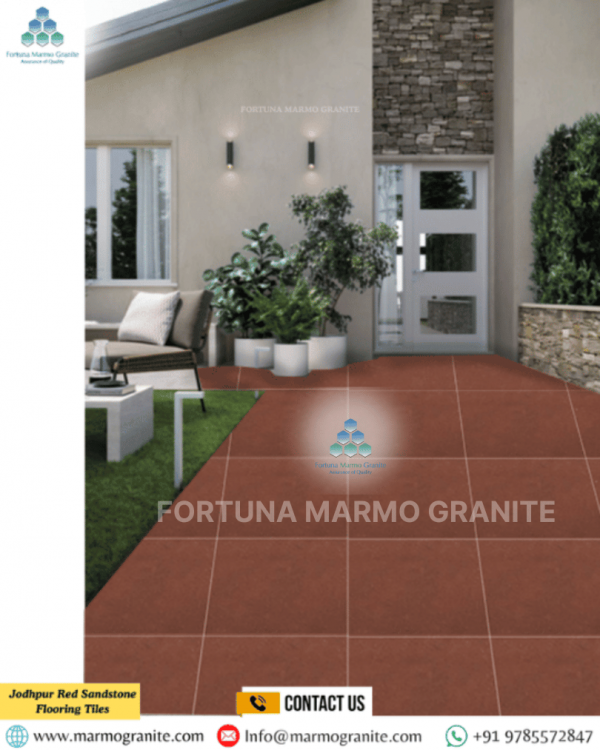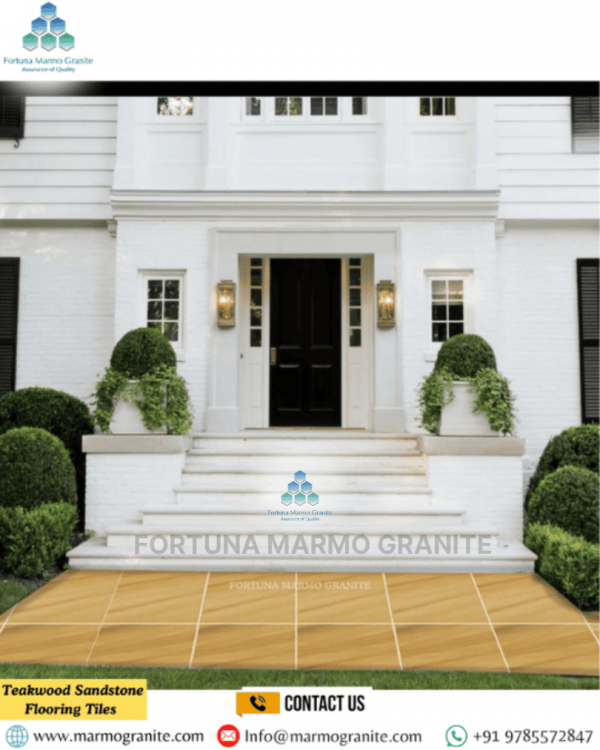The Appeal of Sandstone: Transforming Spaces with Natural Charm
The Appeal of Sandstone In today's design world, trends often change with the seasons. Yet the demand for authenticity and timeless elegance remains strong. Sandstone, with its rich texture and natural integrity, offers a beautiful alternative to artificial materials that lack depth and character. In addition, Formed over thousands of years, this sedimentary rock reflects the essence of earth's evolution. Each grain tells a story of nature's artistry. Whether used in facades, garden pathways, rustic claddings, or elegant flooring, sandstone brings warmth and an organic touch to any space.
Moreover, Its wide spectrum of colors—from soft creams and beiges to bold reds and striking patterns—fits both traditional and modern designs. Beyond beauty, sandstone also offers durability, weather resistance, and eco-friendly qualities, making it a sustainable choice for long-term use., The Appeal of Sandstone As homeowners and designers worldwide embrace natural materials, sandstone continues to shine. It tells a story, preserves history, and adds quiet yet unmistakable charm. With sandstone, every installation becomes more than a surface—it becomes a celebration of the earth's own design brilliance.
What is Sandstone? A Journey from Grains to Grandeur
Moreover, To truly appreciate sandstone, it's helpful to understand its origins. Sandstone is a clastic sedimentary rock composed mainly of sand-sized mineral grains or rock fragments. The most common minerals found in sandstone are quartz and feldspar, but its characteristic color often comes from impurities like iron oxides (red, brown, yellow), manganese oxides (black, grey), or organic matter (greenish-grey).
In addition, The formation of sandstone is a fascinating geological process that spans millions of years. It begins with the erosion of existing rocks, which break down into sand grains. These grains are then transported by wind, water, or ice and deposited in layers, often in ancient riverbeds, lakes, or oceans. Over time, as more layers accumulate, the pressure compacts the lower layers. Simultaneously, mineral-rich waters percolate through the sand, depositing natural cements like silica, calcite, or iron oxides, which bind the grains together. This lithification process transforms loose sand into solid sandstone, a testament to the earth's slow and powerful artistic hand.
A Spectrum of Hues: The Diverse Beauty of Sandstone
One of the most captivating aspects of sandstone is its incredible range of colors. Unlike the uniform appearance of many man-made materials, sandstone offers a natural palette that can complement virtually any design aesthetic.
- Warm Earth Tones: Moreover, From the golden ochre of Rajasthan's quarries to the deep rustic browns of Arizona, these warm hues evoke a sense of comfort, warmth, and groundedness. They are perfect for creating inviting and cozy atmospheres, reminiscent of sun-drenched landscapes.
- Cool Grays and Silvers: In addition, Certain sandstone deposits yield elegant cool grays and silvers, often with subtle blue or green undertones. These colors lend themselves beautifully to modern and minimalist designs, offering a sophisticated and calming presence.
- Fiery Reds and Oranges: Yet, The presence of iron oxides can imbue sandstone with vibrant reds and fiery oranges, creating a dramatic and energetic statement. These bold colors are often chosen for focal points or to inject personality into a space.
- Subtle Pinks and Creams: Although, More delicate varieties display soft pinks, creamy whites, and pale beiges, offering a gentle and ethereal quality. These lighter tones can make spaces feel more expansive and airy, reflecting light beautifully.
- Exotic Greens and Purples: While less common, certain unique geological formations can produce sandstone with intriguing green or even purplish tints, adding a touch of the extraordinary to any project.
Versatility in Application: From Grand Façades to Intimate Interiors
Exterior Grandeur: Enduring Beauty Against the Elements
Façades and Cladding: Sandstone cladding creates a strong and visually appealing exterior. It provides insulation and protection from weather. Its natural textures and diverse colors give building exteriors a dynamic and inviting look.
Paving and Pathways: Sandstone is ideal for patios, walkways, and driveways. Its natural slip resistance and durability withstand heavy foot traffic and changing weather. The organic appearance blends beautifully with garden landscapes.
Retaining Walls and Landscape Features: Sandstone works well for retaining walls, benches, planters, and other decorative garden elements. It complements natural environments and enhances their organic charm.
Interior Serenity: Bringing Nature Indoors
Flooring: Sandstone flooring provides a luxurious and durable surface. It stays cool in summer and retains heat in winter. Its natural variations hide dirt and wear, making it perfect for high-traffic areas. Walking on natural stone offers an unmatched tactile experience.
Feature Walls: A sandstone feature wall can transform any room into a striking space. In living rooms, bedrooms, or bathrooms, its textured surface and natural hues add depth and character.
Fireplaces: Sandstone's heat-resistant properties make it ideal for fireplace surrounds. It brings rustic charm and a sense of permanence, turning the hearth into the heart of the home.
Countertops and Vanities: With proper sealing and maintenance, sandstone works beautifully for countertops and vanity tops. Its unique patterns create a one-of-a-kind surface and add an organic touch to kitchens and bathrooms.
Considerations for Using Sandstone: Ensuring Lasting Beauty
Porosity and Sealing: Many sandstone varieties are porous and can absorb liquids. Sealing is essential, especially for flooring, countertops, and outdoor areas exposed to weather. Regular re-sealing prevents stains and water damage.
Weight: Sandstone is heavy, so you must account for structural support. This is particularly important for elevated installations like wall cladding.
Cost: Prices vary depending on the type, origin, and finish. Sandstone can be more expensive than some synthetic alternatives, but its durability and timeless beauty often justify the investment.
Sourcing and Expertise : Choose sandstone from reputable suppliers who understand the stone's properties. They can guide you on proper applications and maintenance. Professional installation by experienced stone masons is highly recommended to ensure correct laying and sealing.
Variations: Sandstone is a natural material, so variations in color, texture, and veining are normal. Always view samples or a larger batch before purchase to ensure it meets your design expectations.
Conclusion
Indian Sandstones Supplier The timeless beauty and organic character of sandstone continue to captivate the imagination of architects, designers, and property owners across the globe. In addition, Its natural hues, from warm golden browns and rustic reds to serene beiges and soft greys, offer a diverse palette that enhances the visual appeal of any indoor or outdoor space. Sandstone not only delivers aesthetic richness but also embodies remarkable durability, weather resistance, and slip-resistant textures, making it ideal for patios, garden paths, facades, flooring, and wall cladding.
Moreover, The Appeal of Sandstone, At Fortuna Marmo Granite, we take immense pride in sourcing and supplying high-quality sandstone that reflects the grandeur of nature while meeting global standards of craftsmanship. Our team of experts ensures each slab and tile is carefully processed, precision-cut, and finished to bring out its inherent beauty and strength. The Appeal of Sandstone, We work closely with designers, builders, and homeowners to provide tailored solutions that transform visions into enduring masterpieces. With an unwavering commitment to excellence, sustainability, and customer satisfaction, Fortuna Marmo Granite stands as your trusted partner in redefining living and working spaces with the natural charm and timeless elegance of sandstone.



